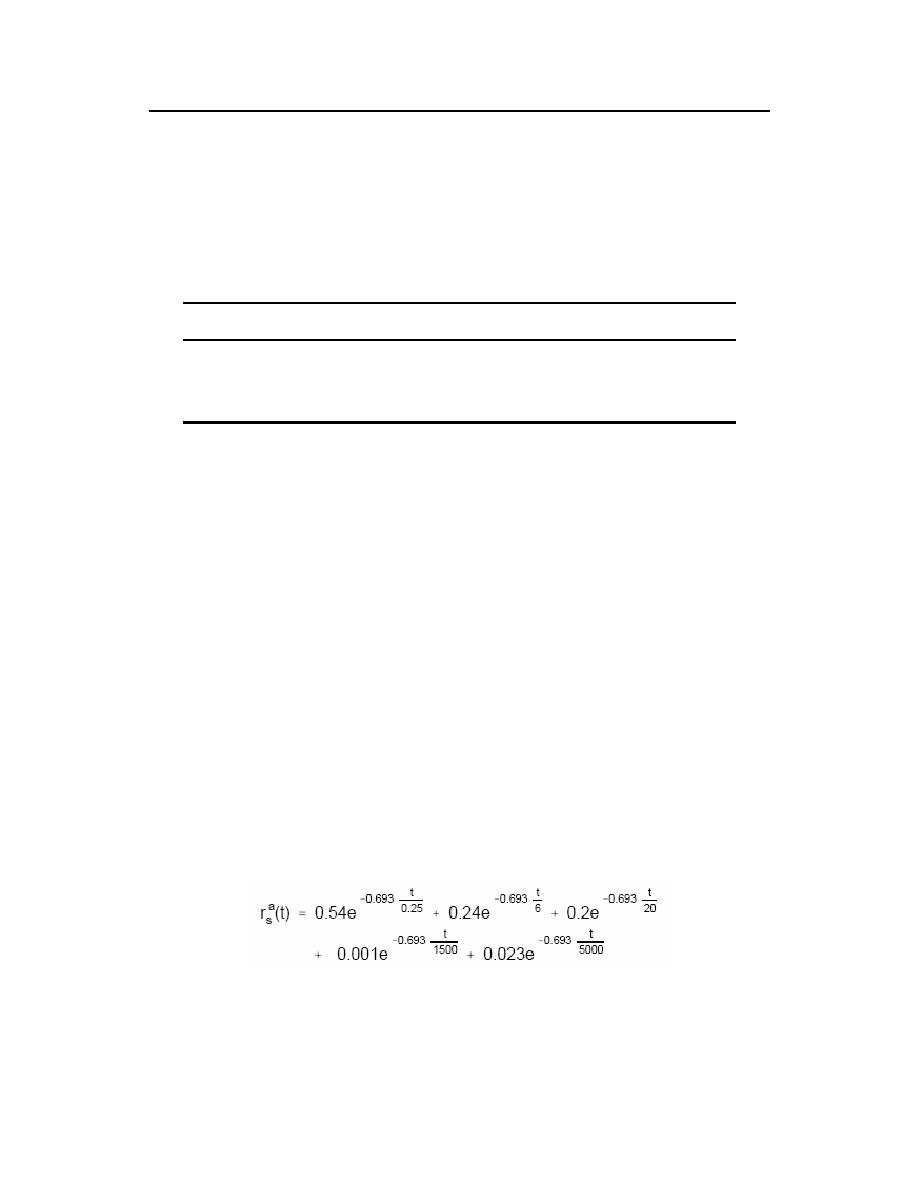 |
|||
|
|
|||
|
Page Title:
Table 5 -8. GI Tract Absorption Factors for Uranium(a) |
|
||
| ||||||||||
|
|  DOE-STD-1136-2004
Guide of Good Practices for Occupational Radiological Protection in Uranium Facilities
ingestion. The GI tract absorption factors for different solubility classes of uranium are given in
Table 5-8. The parameter f1 has large uncertainties and likely varies with age as well as with diet (Wrenn et
al. 1989) and with the chemical and physical form of the uranium. Systemic burdens and committed doses
are directly proportional to f1 for ingestion of long- lived uranium, provided that f1 is greater than 0.01.
Fractional absorption from the GI tract is highly variable, but values of 0.05 for soluble compounds and
0.005 for insoluble ones provide sufficient protection for all but perhaps very high concentrations in
ingested materials.
Table 5 -8. GI Tract Absorption Factors for Uranium(a)
INHALATION CLASS
CHEMICAL FORM (b)
ABSORPTION FACTOR (f1)
D
UF6, UO2F2, UO2(NO3)2
0.05
W
UO3, UF4, UCl4
0.05
Y
UO2, U3O8
0.002
(a) From ICRP 1979; ICRP 1988a; ANSI/HPS 1995.
Note that some compounds that have been classified as class Y have shown a more rapid
clearance from the lung than for other class Y compounds. This may be due to the existence
of mixtures having more than one physico-chemical form (ICRP 1988a; Fisher et al. 1990).
(b) The solubility of uranium oxides is very dependent on heat treatment. The rate of oxidation
may also affect the solubility. Although references assign inhalation classes to various
uranium compounds, it is recommended that solubility studies be performed to characterize
the actual materials present. For example, depending on factors such as the heat treatment
and rate of oxidation of the materials, UO2 could be class W or Y, U3O8 could be class W or
Y, and UO3 could be class D or W.
5.6.3 Systemic Retention and Excretion of Uranium
There are two ways in which the systemic retention of soluble uranium may be calculated: using the
ICRP Publication 30 model or the Fisher-Modified Wrenn-Lipsztein model. The latter, which comprises
modifications of the ICRP Publication 30 lung model and of the Wrenn-Lipsztein urinary excretion model,
is used for class W and class Y uranium. Professional judgment must be used in selecting one of these
functions as the primary model to be used in routine bioassays and as the model of choice in individual dose
assessments.
5.6.3.1 ICRP Publication 30 Uranium Systemic Retention Function
The systemic retention function per unit intake (ras [t]) for uranium given by the ICRP in Publications 30 and
54 (ICRP 1979; ICRP 1988b) is as follows:
(5.1)
5-23
|
|
Privacy Statement - Press Release - Copyright Information. - Contact Us |